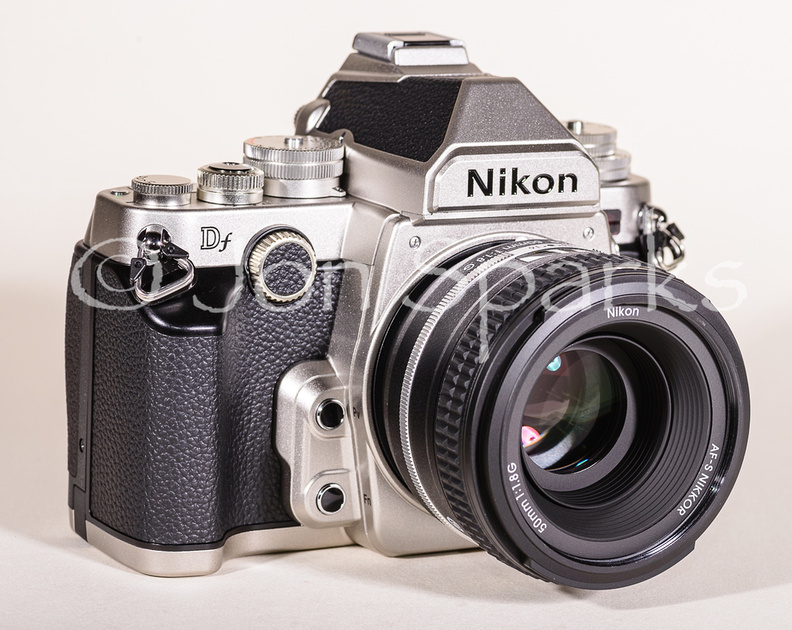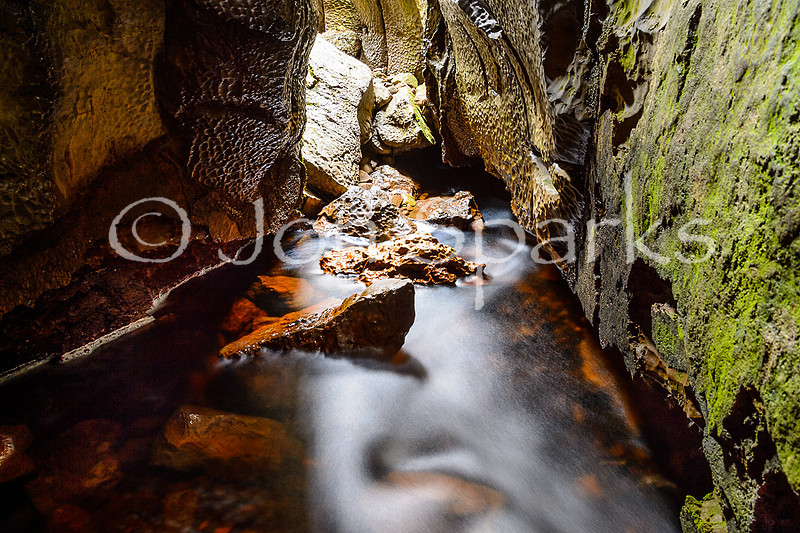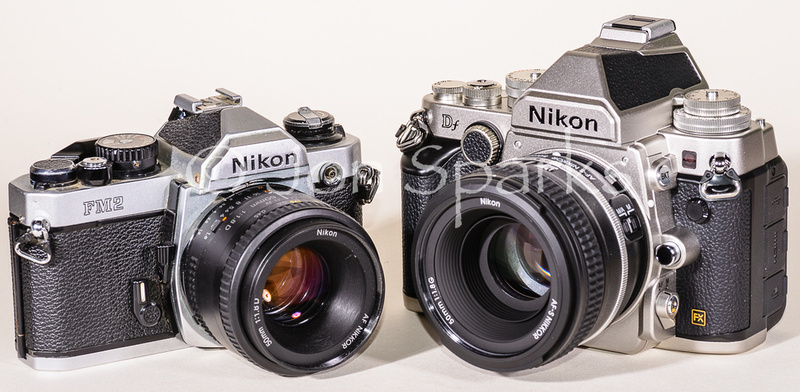Nikon Df ImpressionsI’m not a camera reviewer by trade and most of the time I leave that to the specialists like dpreview. On the other hand, I do get to work intensively with most of Nikon’s new DSLR launches, plus a few other cameras, mostly for Expanded Guide duty, and sometimes I feel that one of these cameras stands out from the pack sufficiently that I think it’s worth sharing my impressions. This is certainly the case with the Nikon Df. The Df attracted a lot of comment before it was even officially launched, and I was certainly intrigued as details emerged, not least because it deliberately harks back to classic 35mm SLRs like the FA, F3 and of course the FM2 – which was my first Nikon, more than 20 years ago now (see Why I am a Nikon user for background on how I stumbled into the world of Nikon). I was even interested enough to venture some thoughts before I got my hands on one.
I’m pleased to see that most of my speculative thoughts in that earlier post stack up pretty well but obviously I can put more flesh on the bones now that I’ve been working with the Df for several weeks. Image Quality Let’s start with the vital issue, which I couldn’t pronounce on before, of Image Quality. In a word, it’s superb. One of the qualities I always look at most closely is dynamic range. In theory, the Df – and the D4, which has the same sensor – are some way behind the D800 and D600 – to the tune of around 1Ev (13.1 as against 14.2 or thereabouts according to DXOmark). This may be so, and if I have time before the Df goes back I’ll do some side by side tests, but my impression after using the Df in some pretty demanding lighting conditions (like the cave shot below) is that it has a more natural look in extreme highlights: in theory the D600 can capture more detail but when it does clip it tends to do so more abruptly.
Where the Df really scores, of course, is in its low-light abilities. In DXOmark’s low-light ISO tests it is the best performer bar none – interestingly, it even beats the D4 although supposedly they have the same sensor. I’ve found that I can use my D600 pretty happily up to ISO 3200, when the situation requires it – whether it’s racing at the Manchester velodrome or in street-lighting at our local Christmas Festival. In ‘studio’ tests with the Df I reckon I could probably take it to 6400 without too many qualms. In fact I’ve been remarkably impressed with its performance up to 25600, though I’d only use it in extreme circumstances. The ISO settings don’t stop there, though: you can take the Df right up to ISO 204800. That’s definitely a last resort, but you can still get remarkably usable images from it with some careful post-processing. It’s worth remembering, especially as the Df so consciously recalls 35mm SLR design, that the fastest film we could readily get hold of was rated ISO 400. You could ‘push-process’ black-and-white films in particular up to 1600 or 3200 at the outside, but quality suffered in a big way, with grain that was glaringly obvious in, say, a 10 x 8 print, and very limited dynamic range. The Camera Since we’re talking about the days of film, this seems like a good moment to consider the camera's ‘retro’ design. I said in my First Thoughts blog that I liked the look of the Df, but having had it around for a few weeks I think I’ve cooled a bit. A lot of people seem to either love or hate it but I’m sitting on the fence. Viewed simply as an object, it’s nice enough, but not so gorgeous I’d want to put it on a shelf just to gaze at. And when you view it as a camera, things get more complicated. From the front, it looks a lot like one of those classic 35mm SLRs – here it is next to my trusty old FM2:
However, in rear view it is 100% a digital camera; the layout of the camera back is very reminiscent of the D800 in particular. Well, of course, a digital camera is what it is: which begs the question of what is gained by turning the clock back 20 years or more in major elements of design, especially the controls on the top-plate. To be honest, I’m slightly conflicted about the control interface. I quite like the external ISO and exposure compensation dials, not least because I can check what the settings are even when the camera is switched off. However, the acid test for any camera, as far as I’m concerned, is how easily you can change shutter-speed, aperture and ISO – the three points of the ‘exposure triangle’ – when the camera is at your eye. How does the Df stack up on this? ISO. The DF requires you to depress a lock button and turn the dial to change ISO. It’s perfectly possible to do this with the camera at the eye, but to me feels awkward. On my D600, I depress the ISO button, which is easily located as it’s the lowest button on the left side of the camera back, and turn the main command dial, which is right there under my thumb. This is quicker and easier. A clear win for the D600. Aperture. The Df allows you to use the aperture ring on older lenses, but most of my lenses don’t have one, and even on those which do I’m going to use the same method as on the others. I can see no earthly reason to shuffle between aperture ring and command dial according to which lens is mounted. This is a useful option if you have really old lenses which can’t set aperture electronically, but for me that’s academic. The Df, like every other Nikon DSLR – including my D600 – allows aperture to be set using the sub-command dial. However, unlike any other Nikon DSLR, the Df’s aperture dial is set vertically rather than horizontally. It’s not a big difference and it’s not hard to get used to, but it does seem to take more effort from the index finger. I can’t really see the point of setting the dial like this, except to make the camera look more 35mm-like. But that’s a case of form driving function, when it should be the other way around. A narrow win for the D600. Shutter-speed. This is complicated because the Df has two means of setting shutter-speed. On the one hand, you can set it using the top-plate dial, just like a 35mm SLR. The dial has a lock button, which means you can’t change the shutter-speed inadvertently. Fair enough, but this means that to operate the dial you need to move both thumb and index-finger from their normal positions. The dial also only allows you to set shutter-speeds at 1 Ev intervals, e.g. 1/60, 1/125, 1/250. The main command dial offers 1/3 Ev steps, e.g. 1/60, 1/80, 1/100, 1/125. Second, the slowest shutter-speed that can be set with the dial is 4 seconds. There’s a Custom Setting which allows you to use the command dial to nudge the shutter speed up or down by 1/3 or 2/3 Ev, and to set times up to 30 secs when the dial is at the 4 secs position, but if you’re going to do that, why not use the command dial full-time anyway? Suffice it to say, after a very short time with the camera, the shutter-speed dial went on to the 1/3 STEP position, which allows me to use the main command dial in the same way I do my D600 (and other Nikon DSLRs) – and I’ve barely touched the top-plate dial since. Since I can use the main command dial in the way I’m used to, I’m calling this one a draw. Still, that’s two wins for the D600 and one tie in what I consider the most crucial aspects of the control interface. I’m not the first to observe that Nikon have spent decades, and employed top designers, to refine the ergonomics of their DSLRs. I’m also not the only one who thinks that in cameras like the D600 they have pretty much nailed it, and that Nikon DSLRs handle better than any others I have used. So why – again, I’m far from the first to ask – would they discard great chunks of that successful formula? Performance and handling I’m afraid my reservations about the handling of the DF don’t end with the ‘exposure triangle’. In particular – and this is my biggest bugbear of all – I really hate the placement of the Live View button. It’s right where I expect the info button to be, and I keep activating Live View when I want to see the information display. This is one aspect where the Df’s rear layout doesn’t match the D800 (or the D600), and I wish it did. Now, don’t get these reservations out of proportion. Partly they arise because I’m much more used to cameras like the D600. If I used the Df full-time I’d get properly acclimatised to it. None of them make it a bad camera and it still handles better than many other DSLRs I could name. In particular, it beats any camera without a second command dial. It’s just not as quick, easy and intuitive to use as my D600 or D7000. Mostly the differences are marginal, but the ‘aggregation of marginal gains’ can add up to something big. In the end, I think the design of the Df makes perfect sense if you are using AI and pre-AI lenses. If that’s what most people are buying it for, then that’s fine – but I suspect most people will be using it with more modern lenses and it seems to me like a case of quite a small ‘classic lens’ tail wagging a much larger ‘modern lens’ dog. One limitation I haven’t mentioned is the lack of a movie mode. Personally, I’m quite happy about this. I’m a photographer, not a film-maker (and I do wish the world still recognised that they are two very different skill sets). The Df sets its stall out as a camera for ‘Pure Photography’ and that’s probably the thing I like best about it. But of course if movies are important to you then the Df is a non-starter. There’s one other ‘missing’ feature which I do find a significant limitation, and this is the lack of a built-in flash. I know, I know, built-in flash is for amateurs – but the D800, which is a professional camera by almost any reckoning, has one. And while built-in flash is essentially useless as a main source of light, in my view is still has two important roles; it can be a useful fill-light, and it can act as the Commander for a wireless setup. If I want to use off-camera flash with the Df, I either have to pack a sync lead, which means the flash can’t be very far off-camera, or I have to drag along my Phottix Odin wireless triggers. They’re great, but it’s more stuff (and more batteries!) to carry, which is not what I want when travelling light. More neutrally, focusing speed and coverage are on a par with my D600; in fact, they use the same focus module. In this regard, then, the Df is not equal to a D800 or even a D7100, let alone a D4, for critical action shooting. In particular, though its image quality in low light is outstanding, its ability to focus in the same conditions is not. Even so, it’s still pretty damn good. To put it in perspective, it knocks spots off any mirrorless camera, let alone compact or phone. But if I was actually going to fork out over £2.5K for one, I might expect more. And there we have one of the big issues about the Df. Price. It’s awkward to make exact comparisons, because in the UK the Df is only supplied with a 50mm lens – and that’s another gripe, because I’ve already got one of those. This means we have to guess at a body-only cost but it would probably be around £2600. That’s almost £500 more than a D800 and £100 more than a D610. Some people will no doubt observe that both of these have more megapixels (36 on the D800, 24 on the D610). To me that’s almost immaterial. In fact it’s one of the things I like best about the Df. If it’s good enough for the D4 (and the upcoming D4s)... 16 megapixels is a fine sweet spot. Few of us ever need more and results in low light in particular are great. But those other models handle better and outperform it in all kinds of ways. So if I was buying now, which camera would I choose? In the end, probably a D610 for light weight (albeit marginally more than the Df), compact size and all-round image quality. For sports shooting the superior AF system on the D800 might swing it. Either way, it wouldn’t be the Df. (Even narrowing the search down to full-frame Nikon, my ideal camera doesn’t quite exist. If I could get the size and weight of the D610, the sensor from the D4/Df, and the build quality and just about everything else from the good old D700 – then I’d be in clover. Especially at a D610-ish price). Final verdict The Df is a confusing camera. Maybe it’s a confused one. I probably sound like I’m slating it, and I don’t mean to. In its performance, especially image quality – and above all, low-light image quality – it’s a terrific camera. But in design terms, it’s a step sideways, not a step forward, and its handling in particular just feels like too many compromises have been made for no better reason than paying homage to 30-year-old 35mm cameras. I loved my FM2 and I don’t want to part with it. But I haven't shot a frame of film for at least five years. The only way in which the FM2 conceivably scores over today’s cameras is its sheer indestructibility, and perhaps its ability to go on shooting with no battery. The Df is the right camera for some people. It makes a style statement, and that will be enough for some buyers. If you want better reasons to buy one, its image quality is terrific, especially in low light, and for a full-frame DSLR it is relatively light and compact. But before I got it I thought this might be one of those cameras that’s hard to hand back. Now I don’t think it will be. Comments
No comments posted.
Loading...
|




